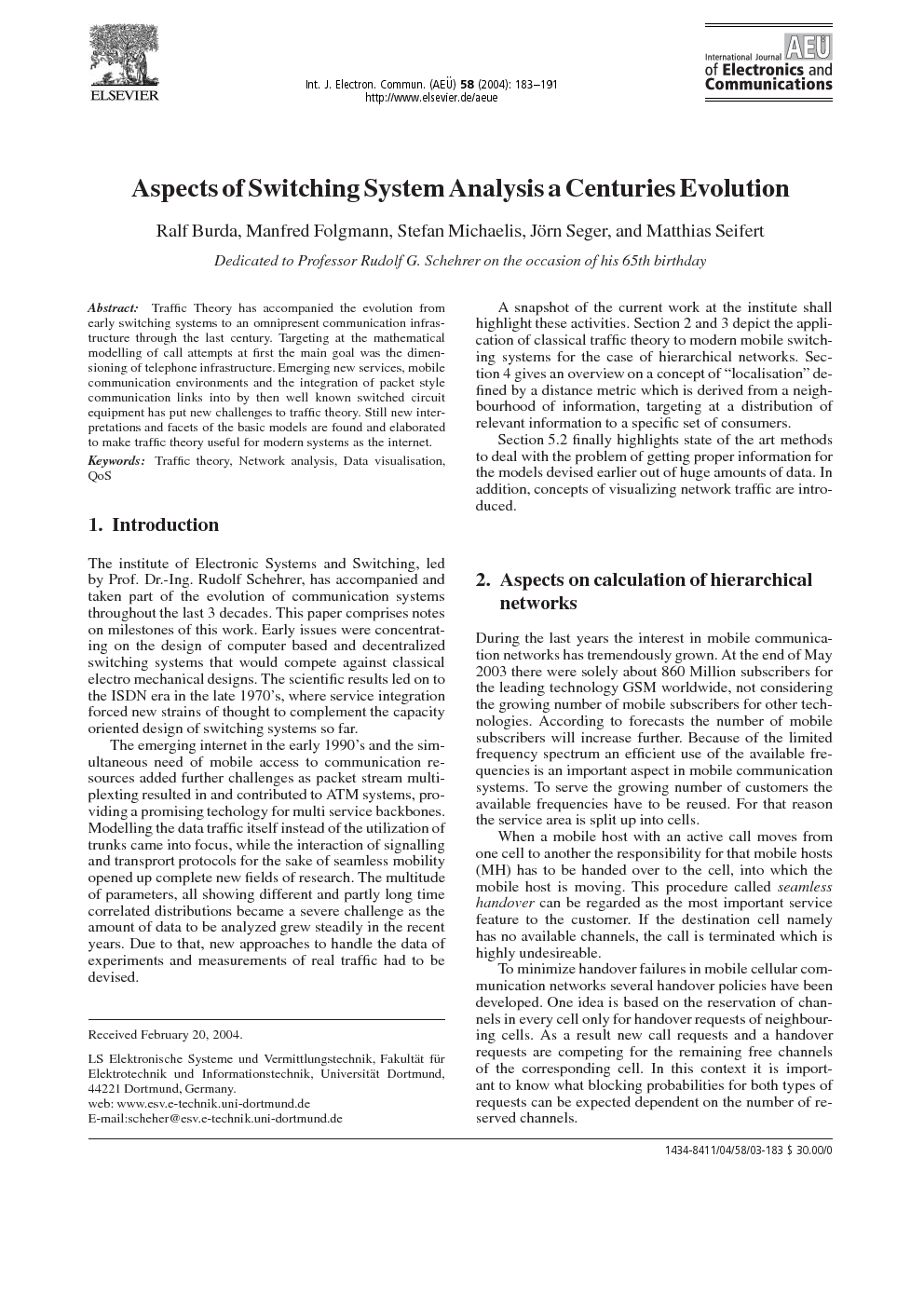ترجمه فارسی عنوان مقاله
جنبه های سوئیچینگ تجزیه و تحلیل سیستم تحول قرن
عنوان انگلیسی
Aspects of Switching System Analysis a Centuries Evolution
| کد مقاله | سال انتشار | تعداد صفحات مقاله انگلیسی |
|---|---|---|
| 27874 | 2004 | 9 صفحه PDF |
منبع

Publisher : Elsevier - Science Direct (الزویر - ساینس دایرکت)
Journal : AEU - International Journal of Electronics and Communications, Volume 58, Issue 3, 2004, Pages 183–191
ترجمه کلمات کلیدی
نظریه ترافیک -
تجزیه و تحلیل شبکه -
مصورسازی داده
کلمات کلیدی انگلیسی
Traffic theory,
Network analysis,
Data visualisation

